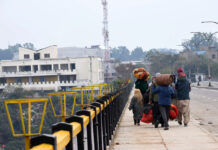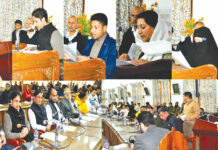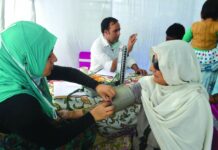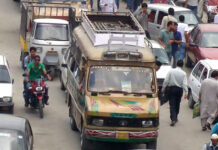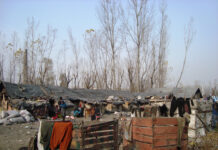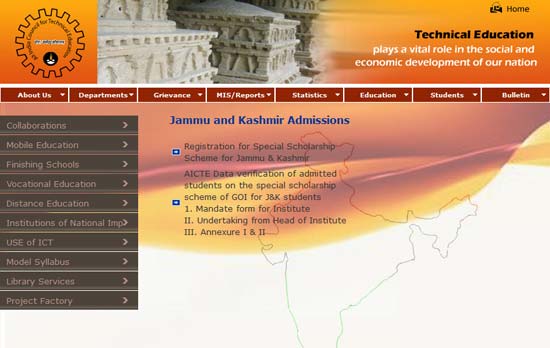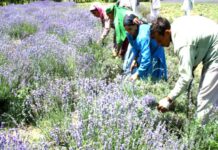The killing of three youngsters in a mysterious shootout at Qammerwari has raised questions including that from a parliamentarian. Meanwhile the army issued a statement with unflattering remarks on state government, embarrassing CM Omar Abdullah. Ilham Hassan reports.
 One the face of it, the shootout that took place at Qamarwari in capital Srinagar in the afternoon of November 29, is just an addition to the hundreds of firing or cross-firing incidents which took place in embattled Jammu and Kashmir during past 22 years. Three local youngsters died in the shootout, promptly identified by the police as attackers belonging to a Jaish-e-Muhammad module. A local policeman, selection grade constable Muhammad Ashraf Shah also died in the brief shootout.
One the face of it, the shootout that took place at Qamarwari in capital Srinagar in the afternoon of November 29, is just an addition to the hundreds of firing or cross-firing incidents which took place in embattled Jammu and Kashmir during past 22 years. Three local youngsters died in the shootout, promptly identified by the police as attackers belonging to a Jaish-e-Muhammad module. A local policeman, selection grade constable Muhammad Ashraf Shah also died in the brief shootout.
But, there are many factors, which make this shootout extra-ordinary. First, the genuineness of the encounter was challenged by Member of Parliament and veteran ruling National Conference leader Shareefuddin Shariq, who described the killing of youngsters as “cold-blooded murder”. The encounter was first of its kind in the city, after the lull in public protests, which dominated its lanes and by-lanes for nearly five months since mid-June. The last standoff between militants and security forces was witnessed in Srinagar at Lal Chowk in the first week of January 2010. The Army’s now-withdrawn comments, that the shootout took place in “demilitarized” Srinagar and is a consequence of withdrawal of CRPF bunkers from the city, provided another serious dimension to the Qamarwari shootout.
The shootout took place at busy Qamarwari Chowk at around 12:35 pm on November 29. Police said that three motorcycle borne youth opened fire on a police party. They were chased and subsequently shot down one by one. Inspector General of Police (Kashmir range) Shiv Murari Sahai said that the police had credible input that the militants were planning to sneak into Srinagar city. Police did not allow media persons, especially the photojournalists, to approach the encounter till the bodies were taken away to police control room, said a photojournalist. The identity of the slain youngsters, too, was kept under wraps till late in the night, he said.
Eyewitnesses of the shootout said that there was a single fire followed by bursts of gunfire. “Within minutes, there was complete chaos. People ran helter-skelter and shopkeepers ran away without downing their shutters. Traffic immediately came to a grinding halt,” a woman said. There was a man wearing a pheran lying in a pool of blood, near a skidded motorcycle. A few yards away, another person was shot dead. The third body was found near Cement Bridge, which opens the area towards Noorbagh pocket of old city.
A deputy superintendent of police, present on the scene said that the motorcycle borne youth opened fire on the policeman deployed in Qammerwari chowk. “They took away his service rifle and during this time his (policeman’s) colleagues opened fire on them”.
 When a journalist asked Sahai as to why the bodies of three youngsters riding a single bike were found at three different places, he shot back, “Do you mean we brought them dead from somewhere” before explaining that the militants died in a shootout when they were being chased away. He claimed recovery of two pistols from slain militants.
When a journalist asked Sahai as to why the bodies of three youngsters riding a single bike were found at three different places, he shot back, “Do you mean we brought them dead from somewhere” before explaining that the militants died in a shootout when they were being chased away. He claimed recovery of two pistols from slain militants.
Locals say that the police have not described the exact sequence of events, which led to the killing of a policeman followed by motorcycle borne youngsters. Who owns the motorbike found from the shootout site, is also not known. Police said they are moving on right track to unravel the details.
Late in the evening, first slain youngster was identified as Peerzada Arshad Bashir, a resident of Alsafa Colony in Sopore. Police had recovered identity card and some academic testimonials from his possession that led them to reach his father. Incidentally, Peerzada was a relative of NC parliamentarian Shareefuddin Shariq, who quickly reacted to his death in the shootout.
“This is a cold-blooded murder. The three youngsters have been killed in a fake encounter. I will take up the matter with Home Minister P Chidambaram and Chief Minister Omar Abdullah,” Shariq was quoted as saying. He also sought punishment for the policemen who were involved in the killings. His demand almost coincided with Director General of Police Kuldeep Khoda’s announcement that the each policeman in the party would be given out-of-turn rank-up promotion besides a collective cash prize of Rs 5 lacs.
Shariq’s comments shook up the police top brass. The DGP immediately flew in from Jammu for damage control. On June 30 afternoon, he addressed a press conference at police control room flanked by IG Sahai and SSP Srinagar Ashiq Bukhari. He described Shariq’s comments as imaginary. “We cannot control imaginary thoughts or views of anybody. All of you know that our brave boy has died in the encounter. The encounter took place in broad daylight in full public view,” he said.
Khoda claimed that the three slain youngsters were militants belonging to a Jaish-e-Muhammad module operating under Waseem Raja Guru, a resident of Seer Jagir in Sopore. “The module was also involved in the killing of two CRPF men on November 10 this year at Pattan,” Khoda said. The DGP said that two revolvers and some hand grenades were recovered from the possession of killed militants.
“Waseem Raja Guru had gone for training across the border in 1991 and returned in 1994. He was working as Battalion Commander of JeM outfit in Sopore. He was booked under the Public Safety Act in 2007 and was released in 2008. He, however, recycled, and remained active since 2008. He was categorized as ‘A’ category JeM militant in 2009,” Khoda said.
About Zahoor Ahmad Hajam of Bandipora, Khoda said the “militant was aged about 30 and was a local trained militant affiliated with Al-Badar outfit in the code name of Tanveer and Imran.”
“He was arrested on August 23, 2004 by the troops of 15 Rashtriya Rifles at Bandipora. On the instance of the militant another militant Hilal Ahmad Shah of Hospital Road Bandipora was also apprehended. A case against FIR No 170/2004 U/S 7/25 was registered against the duo,” Khoda said.
“The militant was detained under PSA for about one and a half year in 2004. After graduation from a private college, he did his B.Ed from Mehboob-ul-Alam College Bandipora in 2008-09. The militant was also working as a teacher in a private school at Bandipora and had left his job some two months back. As per the family sources he left his home on 19 November 2010 and has not returned. He was involved in instigating 2008 agitation,” he elaborated.
 About Arshad Bashir, the DGP said that he had passed class XII exams in 2010 and had got admission in Degree College Bemina. “He had close links with the militant organisations and his house was raided in 2009 by police and Army for the presence of JeM militants. He had developed a close liaison with JeM militant Waseem Raja Guru in 2008-09 and used to be with him off and on,” he claimed.
About Arshad Bashir, the DGP said that he had passed class XII exams in 2010 and had got admission in Degree College Bemina. “He had close links with the militant organisations and his house was raided in 2009 by police and Army for the presence of JeM militants. He had developed a close liaison with JeM militant Waseem Raja Guru in 2008-09 and used to be with him off and on,” he claimed.
In an apparent reference to Shariq’s remarks, Khoda said, “I have given you facts, figures and background. I mentioned this to put at rest any statement coming in any section of media stating otherwise”.
The relatives and neighbours of the slain youth squarely refuted police claims. Protest demonstrations were held at Sopore and Bandipora to protest against the killings. Relatives of Arshad Bashir said that he had left his home, just a day before to get roll number slip for examination. “He was a brilliant student studying at Bemina Degree College. He never indulged in stone-pelting and was busy either in studies or domestic chores,” said his father Bashir Ahmad. Police pressurized the family to bury his body before the crack of dawn and disallowed them to inter him at their ancestral graveyard at Poutkhah.
Bandipora’s Zahoor Ahmad Hajam, according to his friends and relatives, was preparing for civil services examination. His father Ghulam Qadir swore by his innocence and maintained that he was on way to Kashmir University to register himself for access to books required for preparation to competitive examinations.
His former employer at a prominent private school swore by his honesty, dedication and straightforwardness. The only family, which did not explicitly reject police version, was the family of Waseem Raja Guru, whom DGP described as the leader of the JeM module. Guru’s father Abdur Rashid corroborated DGP’s statement about him. He said that he has seen his son last time in 2008 when he was released from Kuthua jail after serving a jail term for his involvement with Jaish outfit. “After release, he left home and never returned. I don’t know why he became a militant,” he said.
The separatists took a cue from Shariq’s statement to whip up the police and state government for “staging fake encounter”. Jamat-e-Islami lauded Shariq for his plain speak and advised him to stick to his guns. Mirwaiz Umar Farooq described the encounter as “fake” and said it was aimed to “terrorize people”. He also likened it with “government’s plans to link stone-pelting phenomenon with militancy”. Syed Ali Geelani demanded impartial probe into the shootout to find out truth.
Even mainstream politicians like MLA Engineer Rasheed demanded impartial probe into the Qamarwari incident.
The shootout saga took another interesting turn when the Udhampur based Northern Command released a statement analyzing the Qamarwari encounter. After lauding police for eliminating three militants, army said that the encounter took place in “demilitarized” Srinagar. The statement took a dig on Omar Abdullah led state government saying it had ‘given in’ to the clamour of demilitarization and dismantling of bunkers in Srinagar, which had ‘delighted’ the separatists. “Terrorists have shown their presence for the second time in a month,” the statement said.
 Even as the statement was withdrawn by the army late in the night, it found place in many newspapers much to the embarrassment of the chief minister.
Even as the statement was withdrawn by the army late in the night, it found place in many newspapers much to the embarrassment of the chief minister.
Omar Abdullah, who heads the Unified Command Headquarters, which took decision to remove some bunkers from Srinagar city following 8-point package announced by the Home Minister P Chidambaram was taken aback by the Army’s comments. He shot a letter to Prime Minister who in turn pulled up northern commander Lt Gen BS Jaiswal. Jaiswal tendered apology to the CM.
In a written statement, PRO (Northern Command) Lt Col Pradeep Kocchar said, “Lt Gen BS Jaswal ‘apologised to the chief minister of Jammu & Kashmir on this issue on Wednesday to resolve the issue’.” “The chief minister and the army commander share extremely cordial relations and have the best of functional rapport. The entire episode is deeply regretted. The state government and army are maintaining best of relations and would continue to do so,” the statement added.
Jaswal also clarified to Abdullah that the army statement had been issued by command PRO on Tuesday without authorisation, a day after the Srinagar shootout, in which three alleged militants were killed.
“The views expressed were personal predilections of a junior officer, which were inadvertently issued as a press release. The contents were neither cleared by Headquarters Northern Command or by Directorate of Public Relations, Ministry of Defence, South Block, New Delhi, nor does the army subscribe to the views expressed,” Kocchar stated.
Analysts say that Army’s statement was indicative of growing wedge between political establishment and the armed forces, a phenomenon which was not overtly prevalent in India.


